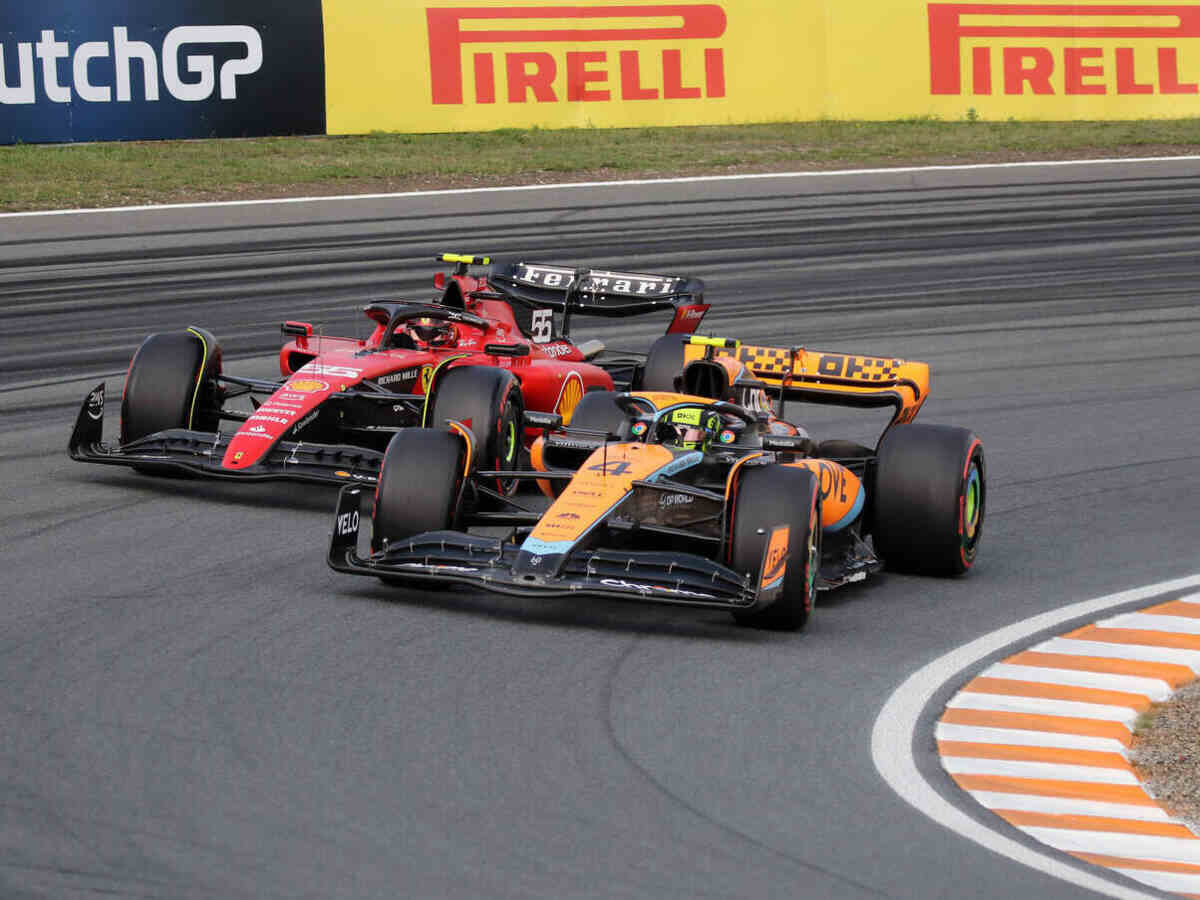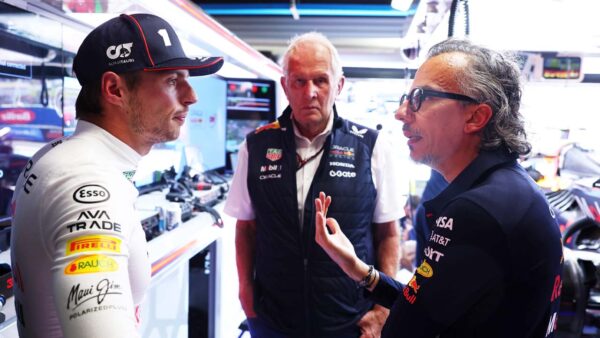F1 reportedly plans to ditch 18-inch wheels in 2026
Formula 1 chief acknowledged that 50Kg weight reduction might be a bit optimistic

Carlos Sainz vs Lando Norris (Via IMAGO)
🔍 Explore this post with:
Formula 1 has implemented various regulatory changes to address team dominance and environmental concerns. In 2021, they introduced a budget cap to create a level among teams. Then, in 2022, technical regulations were adjusted to enhance competition. Most recently, Formula 1 has released guidelines for building the 2026 F1 Challenger, with a significant change being the shift away from 18-inch wheels to make the cars more lightweight.
Formula 1 has already admitted that there is an emphasis on reducing car weight to align with the latest generation of turbo hybrid engines from 2026. To achieve this goal, FIA’s head of single-seaters, Nikolas Tombazis, has stated that they’ve set a target of reducing the car’s weight by 50 kilograms. This weight reduction target also includes changing the size of F1 wheels to enable suitable weight reduction.
The shift to smaller wheels in Formula 1 not only reduces weight but is part of the strategy to decrease drag effects due to the expected power reduction from the 2026 power unit regulations.
However, it’s worth noting that narrower tires may result in reduced mechanical grip, potentially leading to a drop in overall performance. Finding the right balance between aerodynamic gains and maintaining grip will be a crucial challenge in this transition.
Formula 1 chief acknowledged that 50 weight reduction might be a bit optimistic
FIA’s head of single-seaters, Nikolas Tombazis, has acknowledged that the changes in wheel dimensions, making them narrower, along with adjustments to the rear wing and the car overall, are part of an effort to reduce the weight of Formula 1 cars by approximately 50 kilograms.

“With the car on a diet, we can reduce the cornering speeds a bit. Being lighter, they will go faster in a straight line but will generate less aerodynamic load. So, we will need to increase the hybrid’s energy recovery to ensure adequate lap performance,” said Nikolas Tombazis, as reported by motorsports.com
Rounding this statement, F1’s Chief Technical Officer, Pat Symonds, suggested that the 50kg weight reduction target might be overly optimistic. He also suggested that a 20kg reduction appears to be a more realistic goal.
? 2026 Regulations Update:
— RBR Daily (@RBR_Daily) October 2, 2023
– 30 Kg of fuel to be used to charge the battery
– Width reduced to 190 cm from 200 cm
– Wheelbase Length reduced to 340 cm from 360.
A reduction to 330 cm is possible but teams have shown resistances towards it
– 40% reduction in downforce
-… pic.twitter.com/y6bnasCagM
However, The teams have a different approach. Speaking about F1’s growing weight problem earlier this year, Mercedes technical director James Allison stated that channeling cars weight towards another direction is a challenging concept for the engineers. He also acknowledged that FIA chiefs should consider setting a weight limit and allowing teams more flexibility to work within that limit rather than imposing strict regulations.
In case you missed it:
- Tom Clarkson explains how Sergio Perez can save his 2024 Red Bull seat
- George Russell breaks down why Toto Wolff has ‘more respect’ for Lewis Hamilton than him







